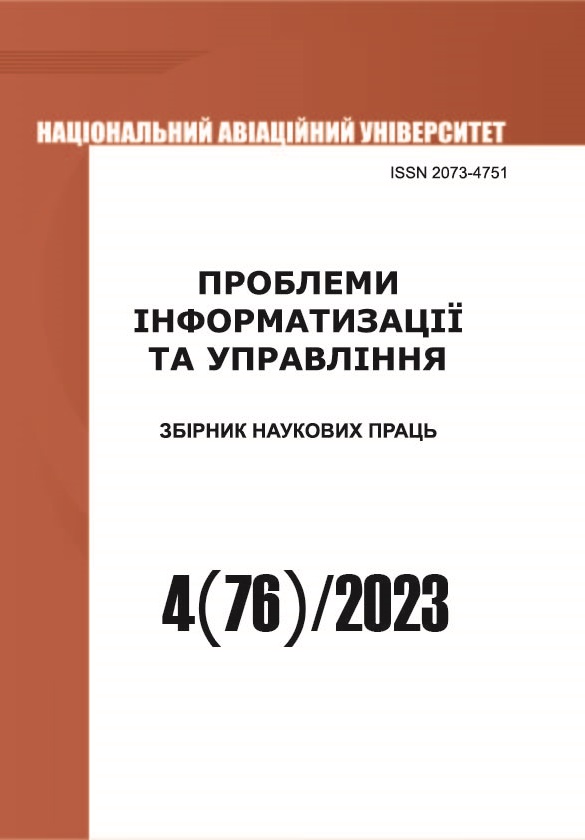Розпізнавання фейкових новин із використанням обробки природної мови й архітектури з низьким енергоспоживанням для периферійних обчислень
DOI:
https://doi.org/10.18372/2073-4751.76.18241Ключові слова:
фейкові новини, обробка природної мови (NLP), контекстуальний аналіз, механізм уваги, малопотужні пристрої, архітектура з низьким електроспоживаннямАнотація
Робота присвячена розробці та застосуванню удосконаленого методу розпізнавання фейкових новин з використанням обробки природної мови (NLP) та архітектури з низьким електроспоживанням для периферійних обчислень. Впроваджено механізм уваги та контекстуальний аналіз для виявлення лінгвістичних ознак достовірності та стилістичних відмінностей між фейковими та правдивими новинами. Такий підхід має на меті забезпечити перевірку новин на периферійних пристроях з обмеженими обчислювальними ресурсами без шкоди для швидкості.
Експериментальні дослідження, проведені на різних джерелах новин, підтверджують високу ефективність запропонованого методу. Фейкові новини виявлені за вищим використанням емоційно забарвлених слів, імовірнісних висловлювань та нецензурної лексики порівняно з правдивими новинами.
Інтеграція механізму уваги та контекстуального аналізу дозволяє досягти точності виявлення фейкових новин на рівні 81%. Результати цієї роботи відкривають шлях для подальших досліджень у напрямку розуміння та виявлення складних лінгвістичних особливостей у текстах новин, спрямованих на боротьбу з дезінформацією у суспільстві.
Посилання
Shu K., Sliva A., Wang S., Tang J., Liu H. Fake news detection on social media: A data mining perspective. ACM SIGKDD explorations newsletter. 2017. V. 19(1). P. 22–36.
Zhou X., Jain A., Phoha V.V., Zafarani R. Fake news early detection: A theory-driven model. Digital Threats: Research and Practice. 2020. V. 1(2). P. 1–25.
Zhou X., Zafarani R. A survey of fake news: Fundamental theories, detection methods, and opportunities. ACM Computing Surveys (CSUR). 2020. V. 53(5). P. 1–40.
Schmidt A., Wiegand M. A survey on hate speech detection using natural language processing. Proceedings of the Fifth International Workshop on Natural Language Processing for Social Media / Valencia, Spain, 2017. P. 1–10.
Przybyla P. Capturing the style of fake news. Proceedings of the AAAI conference on artificial intelligence. V. 34, No. 01. 2020. P. 490–497.
Zhang C., Gupta A., Qin X., Zhou Y. A computational approach for real-time detection of fake news. Expert Systems with Applications. 2023. V. 221. 119656.
Vaswani A., et al. Attention is all you need. 31st Conference on Neural Information Processing Systems (NIPS 2017) / Long Beach, USA, 2017. 11 p.
Mishchenko L., Klymenko I. Method for Detecting Fake News Based on Natural Language Processing. The VI International Scientific and Practical Conference «Modern ways of solving the problems of science in the world» / Warsaw, Poland, 2023. P. 375–378.
Alammary, A.S. Arabic questions classification using modified TF-IDF. IEEE Access. 2021. V. 9. P. 95109–95122.
Pathak A., Srihari R.K. BREAKING! presenting fake news corpus for automated fact checking. Proceedings of the 57th annual meeting of the association for computational linguistics: student research workshop / Florence, Italy, 2019. P. 357–362.
Almandouh M.E., Alrahmawy M. F., Eisa M., Tolba A.S. Ensemble Based Low Complexity Arabic Fake News Detection. International Journal of Intelligent Systems and Applications in Engineering. 2023. V. 11(2). P. 1022–1031.
##submission.downloads##
Опубліковано
Номер
Розділ
Ліцензія
Автори, які публікуються у цьому журналі, погоджуються з наступними умовами:- Автори залишають за собою право на авторство своєї роботи та передають журналу право першої публікації цієї роботи на умовах ліцензії Creative Commons Attribution License, котра дозволяє іншим особам вільно розповсюджувати опубліковану роботу з обов'язковим посиланням на авторів оригінальної роботи та першу публікацію роботи у цьому журналі.
- Автори мають право укладати самостійні додаткові угоди щодо неексклюзивного розповсюдження роботи у тому вигляді, в якому вона була опублікована цим журналом (наприклад, розміщувати роботу в електронному сховищі установи або публікувати у складі монографії), за умови збереження посилання на першу публікацію роботи у цьому журналі.
- Політика журналу дозволяє і заохочує розміщення авторами в мережі Інтернет (наприклад, у сховищах установ або на особистих веб-сайтах) рукопису роботи, як до подання цього рукопису до редакції, так і під час його редакційного опрацювання, оскільки це сприяє виникненню продуктивної наукової дискусії та позитивно позначається на оперативності та динаміці цитування опублікованої роботи (див. The Effect of Open Access).


